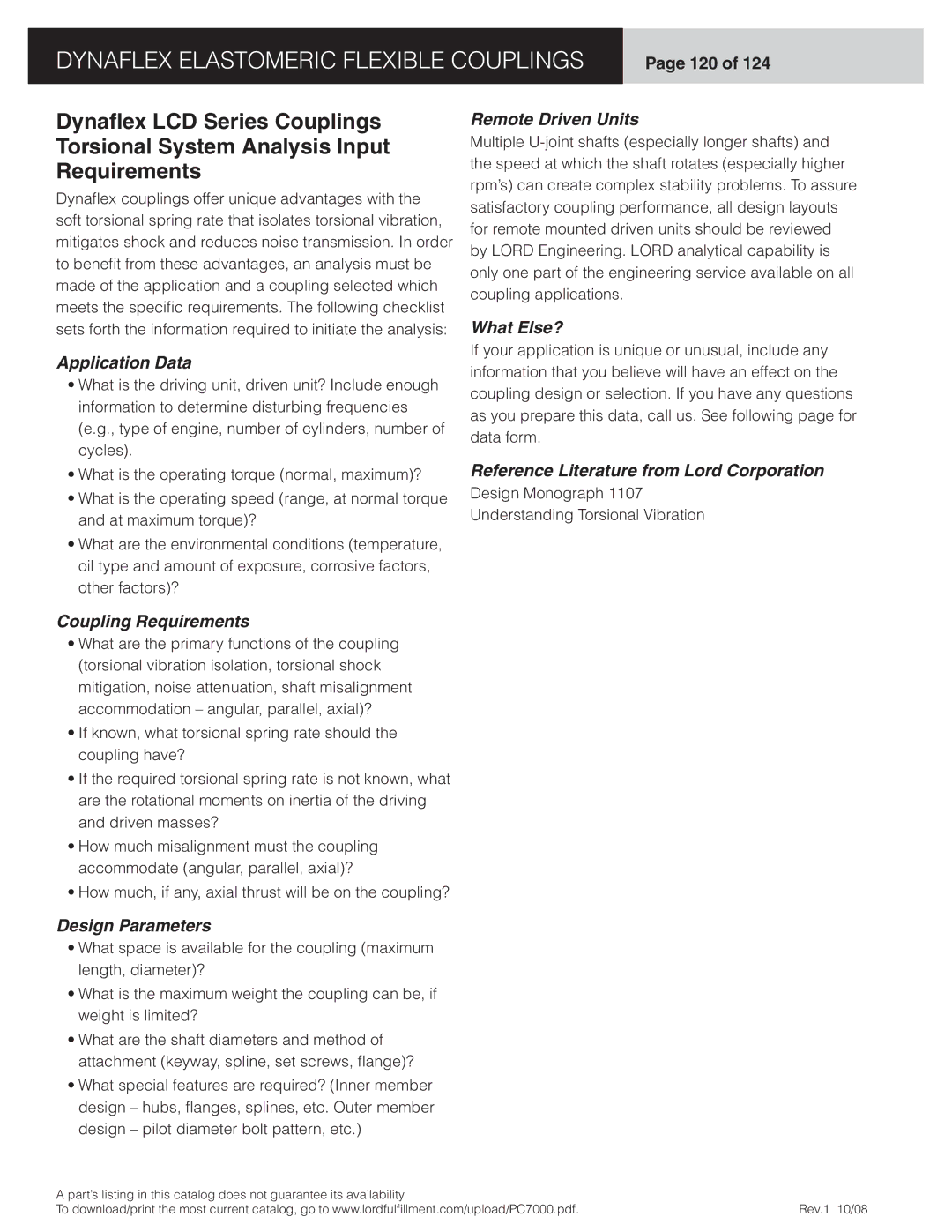DYNAFLEX ELASTOMERIC FLEXIBLE COUPLINGS | Page 120 of 124 |
|
|
Dynaflex LCD Series Couplings
Torsional System Analysis Input
Requirements
Dynafl ex couplings offer unique advantages with the soft torsional spring rate that isolates torsional vibration, mitigates shock and reduces noise transmission. In order to benefi t from these advantages, an analysis must be made of the application and a coupling selected which meets the specifi c requirements. The following checklist sets forth the information required to initiate the analysis:
Application Data
•What is the driving unit, driven unit? Include enough information to determine disturbing frequencies (e.g., type of engine, number of cylinders, number of cycles).
•What is the operating torque (normal, maximum)?
•What is the operating speed (range, at normal torque and at maximum torque)?
•What are the environmental conditions (temperature, oil type and amount of exposure, corrosive factors, other factors)?
Coupling Requirements
•What are the primary functions of the coupling (torsional vibration isolation, torsional shock mitigation, noise attenuation, shaft misalignment accommodation – angular, parallel, axial)?
•If known, what torsional spring rate should the coupling have?
•If the required torsional spring rate is not known, what are the rotational moments on inertia of the driving and driven masses?
•How much misalignment must the coupling accommodate (angular, parallel, axial)?
•How much, if any, axial thrust will be on the coupling?
Design Parameters
•What space is available for the coupling (maximum length, diameter)?
•What is the maximum weight the coupling can be, if weight is limited?
•What are the shaft diameters and method of attachment (keyway, spline, set screws, fl ange)?
•What special features are required? (Inner member design – hubs, fl anges, splines, etc. Outer member design – pilot diameter bolt pattern, etc.)
Remote Driven Units
Multiple
What Else?
If your application is unique or unusual, include any information that you believe will have an effect on the coupling design or selection. If you have any questions as you prepare this data, call us. See following page for data form.
Reference Literature from Lord Corporation
Design Monograph 1107
Understanding Torsional Vibration
A part’s listing in this catalog does not guarantee its availability. |
|
To download/print the most current catalog, go to www.lordfulfi llment.com/upload/PC7000.pdf. | Rev.1 10/08 |
